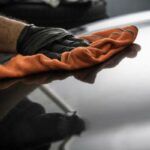The correct use of car seats is not only compulsory, it also prevents serious injuries and deaths in accidents.
Anyone who has children at home knows that they need to be protected at all times. When it comes to transporting them from one place to another, care must be taken. But how exactly do you transport children?
The first thing you need to know is that there are various types of car seats on the market. You can choose for each stage or choose models that fit from 0 to 36 kg, from 9 to 36 kg, from 0 to 25 kg, from 0 to 18, among others. The essential thing is to check that the seats fit perfectly both in the vehicle and on the child’s body.
It is also important to test that the car seat is securely fastened in the car. To do this, bend one leg and place your knee on the seat and pull hard. In addition, only buy car seats certified by the National Institute of Metrology, Standardization and Industrial Quality (Inmetro), which follow Technical Standard NBR 14.400, which obliges manufacturers to comply with safety specifications.
There are cars, for example, that don’t have three-point belts. But to solve this problem, Inmetro has certified equipment that allows car seats to be installed with the two-point belt. However, the equipment is not suitable for baby comfort and booster seats. In these cases, it’s best to check with the dealership to make sure the belt fits.
The best tip is safety, so price, model and brand should not influence the choice of seat, which should first of all be tested in the car. This means checking that the seat fits the child’s body perfectly and is comfortable. Also, always consult the manual that comes with the car seat to learn how to install each model correctly.
Since September 2010, Resolution No. 277 of the National Traffic Council (Contran), of May 28, 2008, has been in force in Brazil, according to which children under the age of ten must be transported in the rear seats, individually using a restraint device appropriate to their age. Failure to use car seats or booster seats is considered a very serious offense, with a fine of R$ 191.54 and 7 points on the driver’s license. Enforcement will be carried out by the Federal Highway Police or an equivalent body in each city.
However, more than complying with a Contran resolution and avoiding fines, the use of car seats can reduce the risk of serious injury and death in traffic accidents by more than 70%. Studies on car seat use show that only 60% of cars use the right type of seat. When it comes to installing car seats, the figure rises to 70%. In other words, 30% of those surveyed had not installed the car seat correctly, whether it was the wrong positioning, poor installation or the child not being securely fastened in the seat.
How to Transport Children in a Motor Vehicle?
So that you don’t become part of the statistics, learn about each type of car seat and how it should be installed.
For children up to 13 kg
A baby carrier is ideal for children up to one year old. It should preferably be installed in the middle of the back seat of the vehicle, with its back to the dashboard, fastened by the car’s 3-point seat belt. Pay attention: the straps of the baby carrier should pass at shoulder height or slightly below, adjusted to the child’s body with one finger of slack.
For children from 9 to 18 kg
For children between 1 and 4 years old, the ideal seat is a car seat. It should be placed in the middle of the rear seat, with its back to the dashboard, until the child is at least 1 year old, after which it should be installed facing the dashboard, in the middle of the seat.
For children from 15 to 36 kg
For children between the ages of 4 and 10, the booster seat is the safest. It must be placed in the rear seat with a three-point seat belt. But be aware, the three-point harness is designed to fit in the correct places on the child’s body: across the center of the shoulder and chest and over the hips.
Note that the top of the child’s ear must not extend beyond the top of the backrest or seat. There are two models of booster seats on the market, one with a backrest, with its own seat belt (3-point), designed for cars that don’t have a high backrest in their seat, and another model that only has a seat, designed for cars that have a high backrest (that goes over the child’s ears) in the back seat.
Carrying Children in the Front Seat
Children over the age of 10 and over 1.45m will be able to sit in the front seat, as passengers, as soon as they can place both feet fully on the floor of the vehicle, using the 3-point belt correctly. And remember: The correct use of safety seats, combined with conscious and safe driving, saves many lives.



